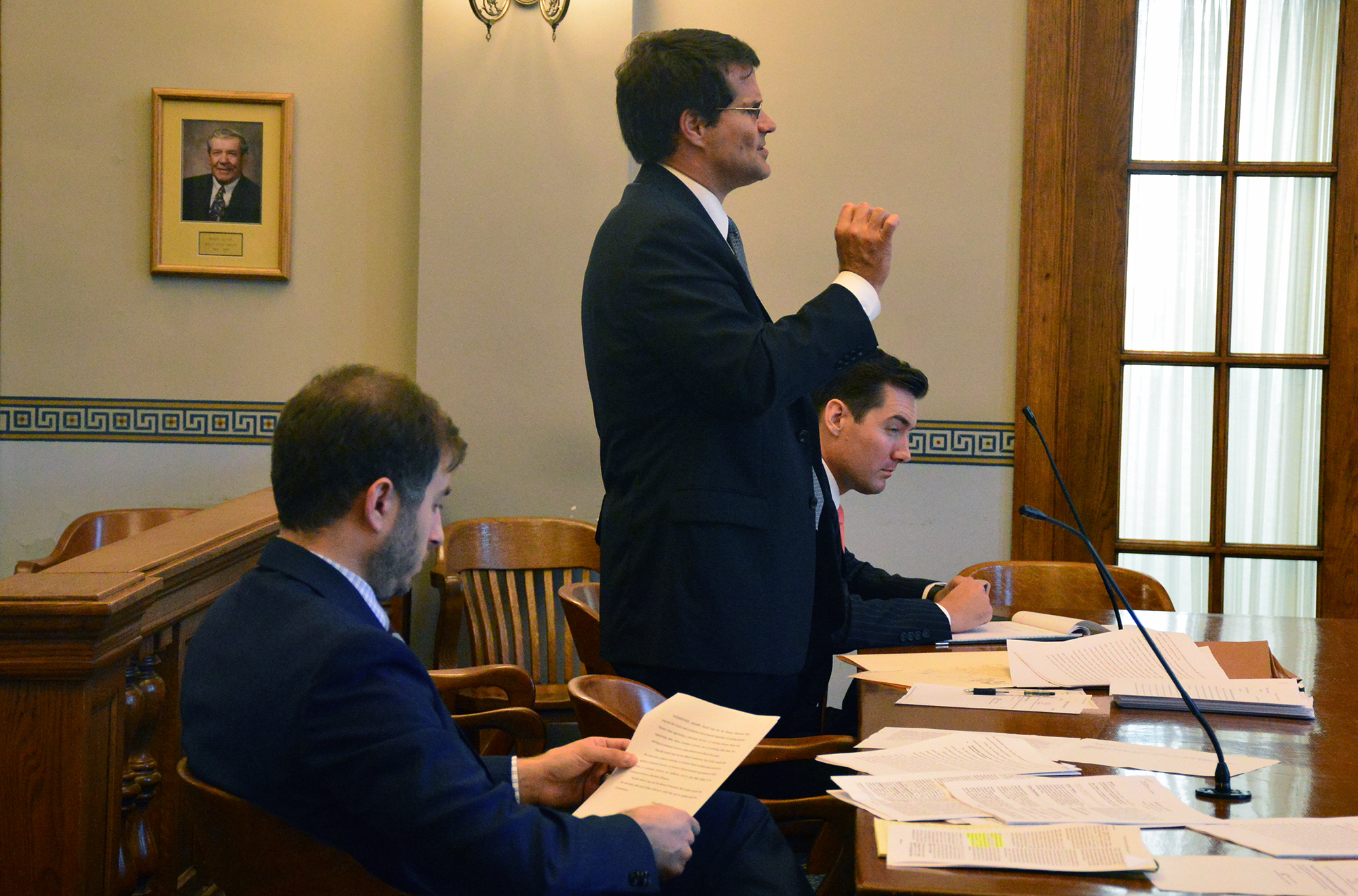JEFFERSON CITY, Mo. — Those challenging the authority of the governor to appoint the lieutenant governor are no longer seeking to nullify appointment but rather are asking a judge to simply rule on its legality.
The Missouri Democratic Party, along with World War II veteran Darrell Cope, filed a lawsuit in Cole County alleging that Gov. Mike Parson did not have the legal authority to appoint Sen. Mike Kehoe to the state’s number two position.
Kehoe was appointed to lieutenant governor on June 18 by Parson — less than three weeks after the now-governor was elevated from that very position.
Within hours, the move was challenged in court. The lawsuit originally sought to block Kehoe’s appointment and force a special election where the voters would decide the issue.
But the plaintiffs have now changed course.
In a hearing Thursday, Matt Vianello, who is representing Cope and the Democratic Party, agreed with attorneys representing Parson and Kehoe that only the legislature has the power to remove a lieutenant governor from office.
With that in mind, Vianello said he only wants Cole County Circuit Judge Jon Beetem to issue a ruling saying a governor cannot fill a vacant lieutenant governor post.
The tactic resulted in some questions from Beetem who asked Vianello, “What’s the point? What are you asking me to do? Tell the legislature to impeach him?”
If Beetem ruled in favor of the plaintiffs, it would be up to Kehoe to decide whether he should step down or not.
John Sauer, one of the attorneys representing the defense, said Vianello was “kind of tiptoeing back and forth.”
The issue of filling of lieutenant governor vacancy is not new. The debate has been ongoing for decades with the Missouri Constitution murky on the topic.
Attorneys for Parson and Kehoe, who say Beetem should dismiss the case, argue that the governor has the ability to fill vacancies in public office unless there is a law the specifically addresses how a certain vacancy should be filled.
There is no statute in Missouri that specifies how exactly to fill a vacancy for Lieutenant Governor.
Sauer also argued that precedent in Missouri is on the side of Parson.
In 2000, when Roger Wilson was elevated from lieutenant governor to governor following the death of Gov. Mel Carnahan, he appointed Joe Maxwell to fill his old position.
But Vianello contends that “the governor does not have the authority to appoint a lieutenant governor when the position comes open.”
He points to part of Missouri Statute that states: “Whenever any vacancy, cause in any manner or by any means whatsoever, occurs or exist in any state or county office originally filled by election of the people, other than in the offices of lieutenant governor, state senator or representative, sheriff, or recorder of deeds in the city of St. Louis, the vacancy shall be filled by appointment by the governor…”
“The Constitution does not provide a means of appointing a lieutenant governor. It is silent on the subject,” Vianello wrote.

Alisha Shurr was a reporter for The Missouri Times and The Missouri Times Magazine. She joined The Missouri Times in January 2018 after working as a copy editor for her hometown newspaper in Southern Oregon. Alisha is a graduate of Kansas State University.



